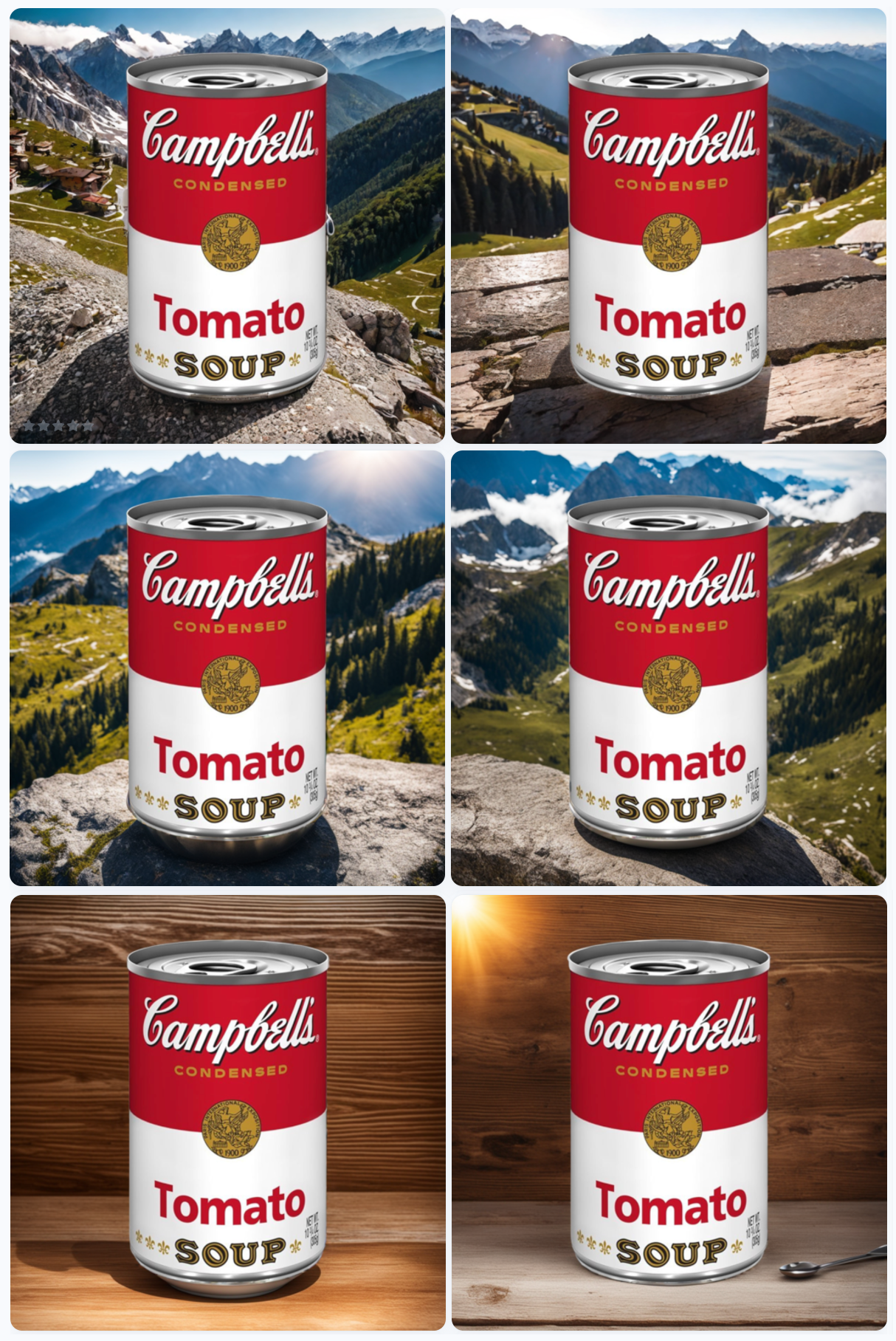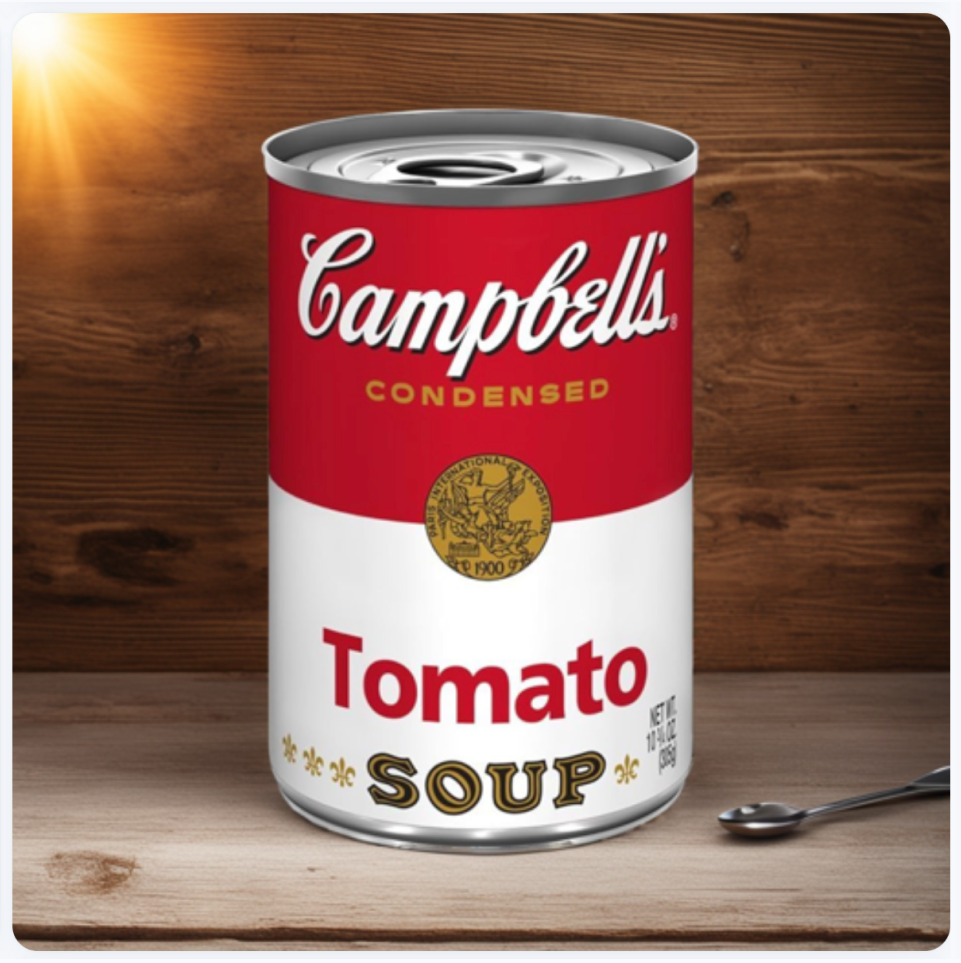
While AI-based image generation creates magnificent fantasy worlds, urban dystopias or marvellous landscapes with ease, it was previously difficult to depict products or product packaging reliably and to a high standard using these tools. This is now changing bit by bit.

We have effectively staged the Campbell’ Soup tin in this example with AI-generated backgrounds, and even added some mountain scenarios using a prompt. The product image was taken directly from an online image database; neither a shoot nor a 3D production was necessary. Of course, you also have to separate the wheat from the chaff here and make sure that the can is not hanging in the air (bottom left) or that the spoon is dramatically too small in relation to the can (bottom right). After that, however, there are still a number of images that could be used.

We have effectively staged the Campbell’ Soup tin in this example with AI-generated backgrounds, and even added some mountain scenarios using a prompt. The product image was taken directly from an online image database; neither a shoot nor a 3D production was necessary. Of course, you also have to separate the wheat from the chaff here and make sure that the can is not hanging in the air (bottom left) or that the spoon is dramatically too small in relation to the can (centre right). After that, however, there are still a number of images that could be used.
With elaborate shoots and high-quality 3D models of packaging, products can certainly be presented in an even more sophisticated and targeted way, for example if a specific and reproducible campaign look is to be achieved. However, for digital campaigns with a high demand for image variants in particular, AI is increasingly opening up new possibilities for generating a wide range of product images. Just think of segmentation, personalisation and corresponding multivariate testing.
What is our takeout?
AI-supported product presentation in campaign assets is on the way. Not yet perfect - but definitely worth a try for certain use cases.



